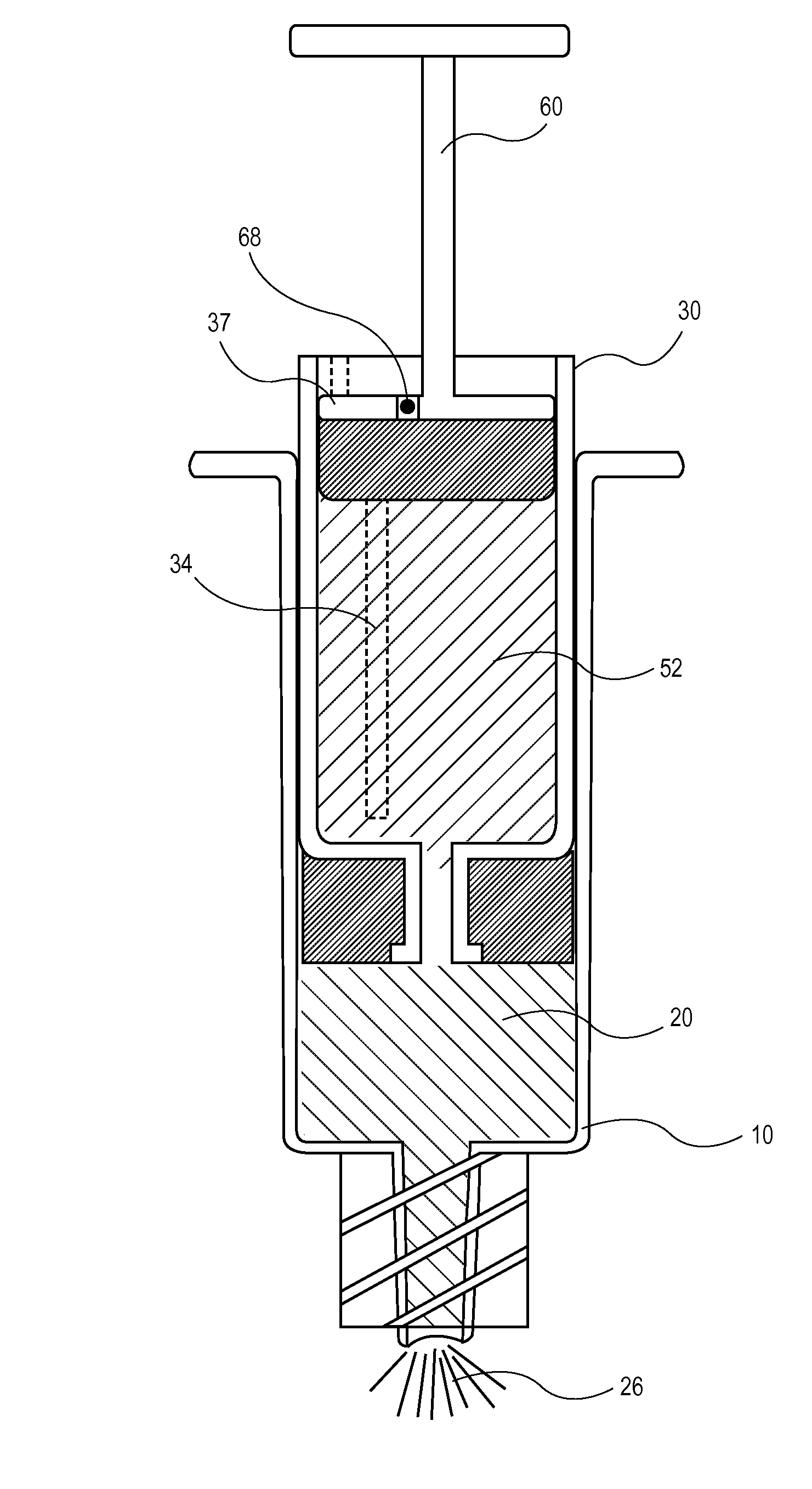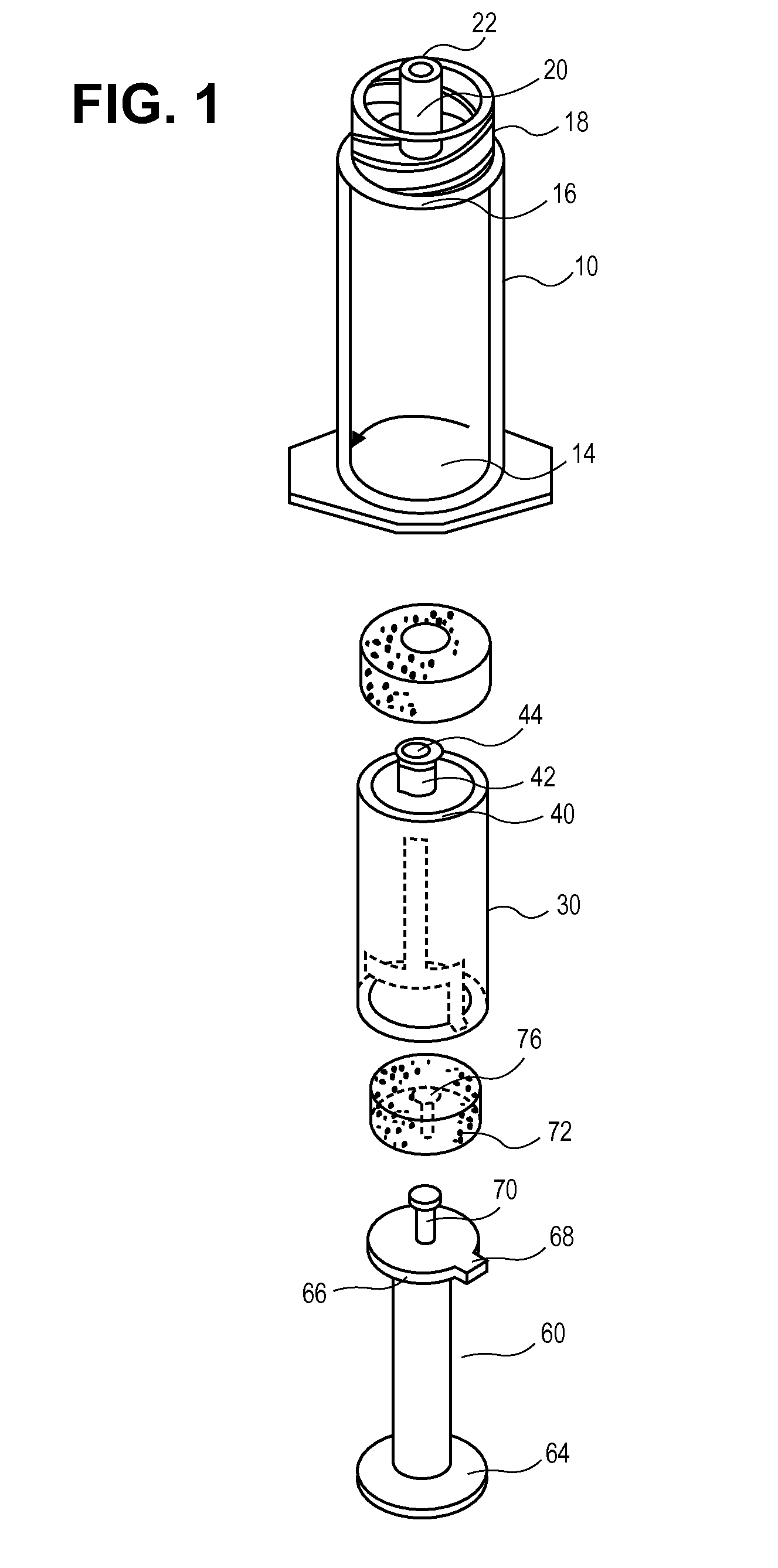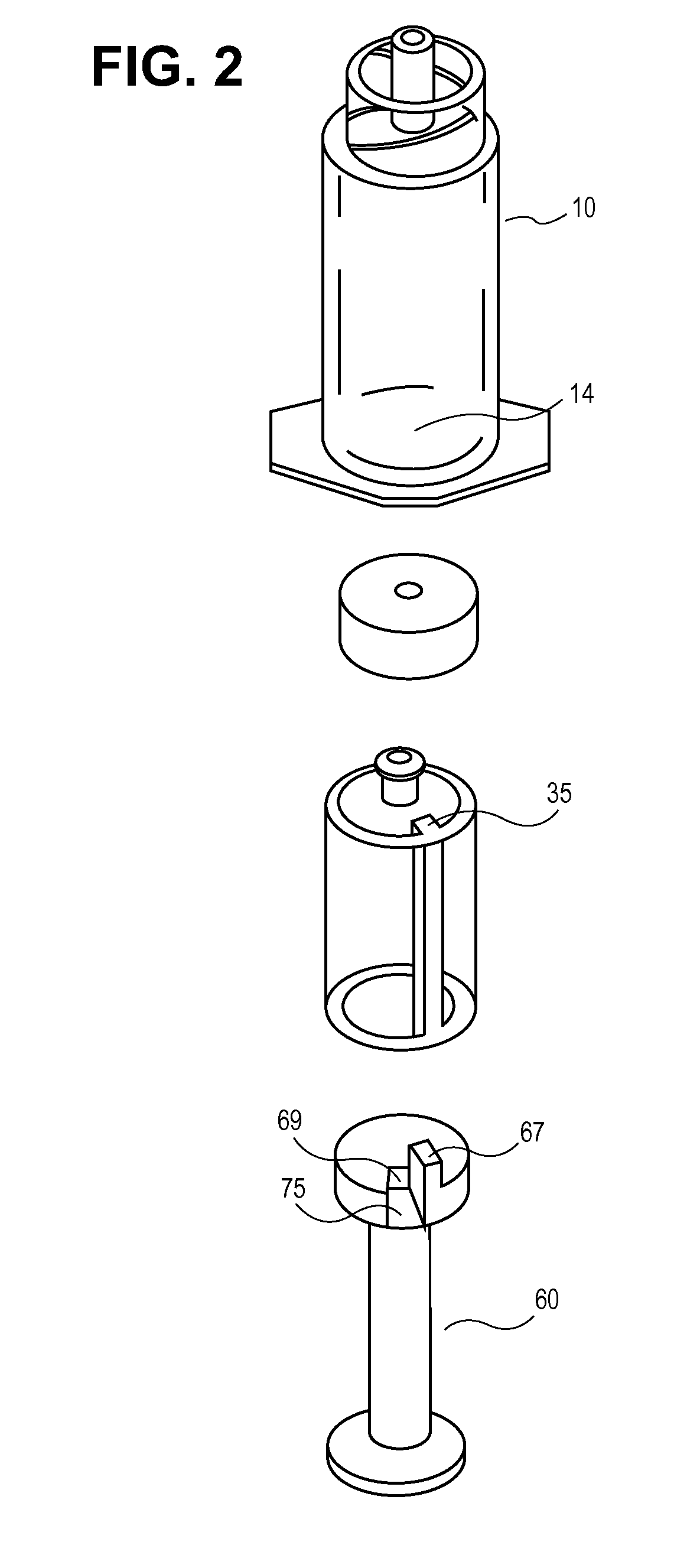Autoflush syringe
a technology of syringe and syringe, which is applied in the direction of liquid handling, instruments, volume metering, etc., can solve the problems of increased risk of medical errors, time sensitive, and problematic left over medication, and achieve the effect of preventing movement of liquid and ensuring solution dissolution
- Summary
- Abstract
- Description
- Claims
- Application Information
AI Technical Summary
Benefits of technology
Problems solved by technology
Method used
Image
Examples
Embodiment Construction
[0042]Described herein are syringe devices, systems and methods. In general, the syringe may include a second chamber and a cartridge movable within the second chamber. The cartridge includes a cartridge chamber, a first end that defines a conduit in fluid communication with the cartridge chamber and the second chamber, a liquid disposed within the cartridge chamber (first chamber) such that there is a liquid-air interface at or within the conduit, wherein the liquid has a fluid property such that the liquid-air interface, cooperating with the conduit and the fixed volume of the cartridge, prevents movement of the liquid out of the conduit, a second end, movable within the cartridge chamber, and a locking mechanism having a locked configuration and an unlocked configuration, the locking mechanism preventing movement of the second end within the cartridge chamber while in the locked configuration. In general, the methods of filling a syringe during manufacturing may include the steps...
PUM
 Login to View More
Login to View More Abstract
Description
Claims
Application Information
 Login to View More
Login to View More - R&D
- Intellectual Property
- Life Sciences
- Materials
- Tech Scout
- Unparalleled Data Quality
- Higher Quality Content
- 60% Fewer Hallucinations
Browse by: Latest US Patents, China's latest patents, Technical Efficacy Thesaurus, Application Domain, Technology Topic, Popular Technical Reports.
© 2025 PatSnap. All rights reserved.Legal|Privacy policy|Modern Slavery Act Transparency Statement|Sitemap|About US| Contact US: help@patsnap.com



